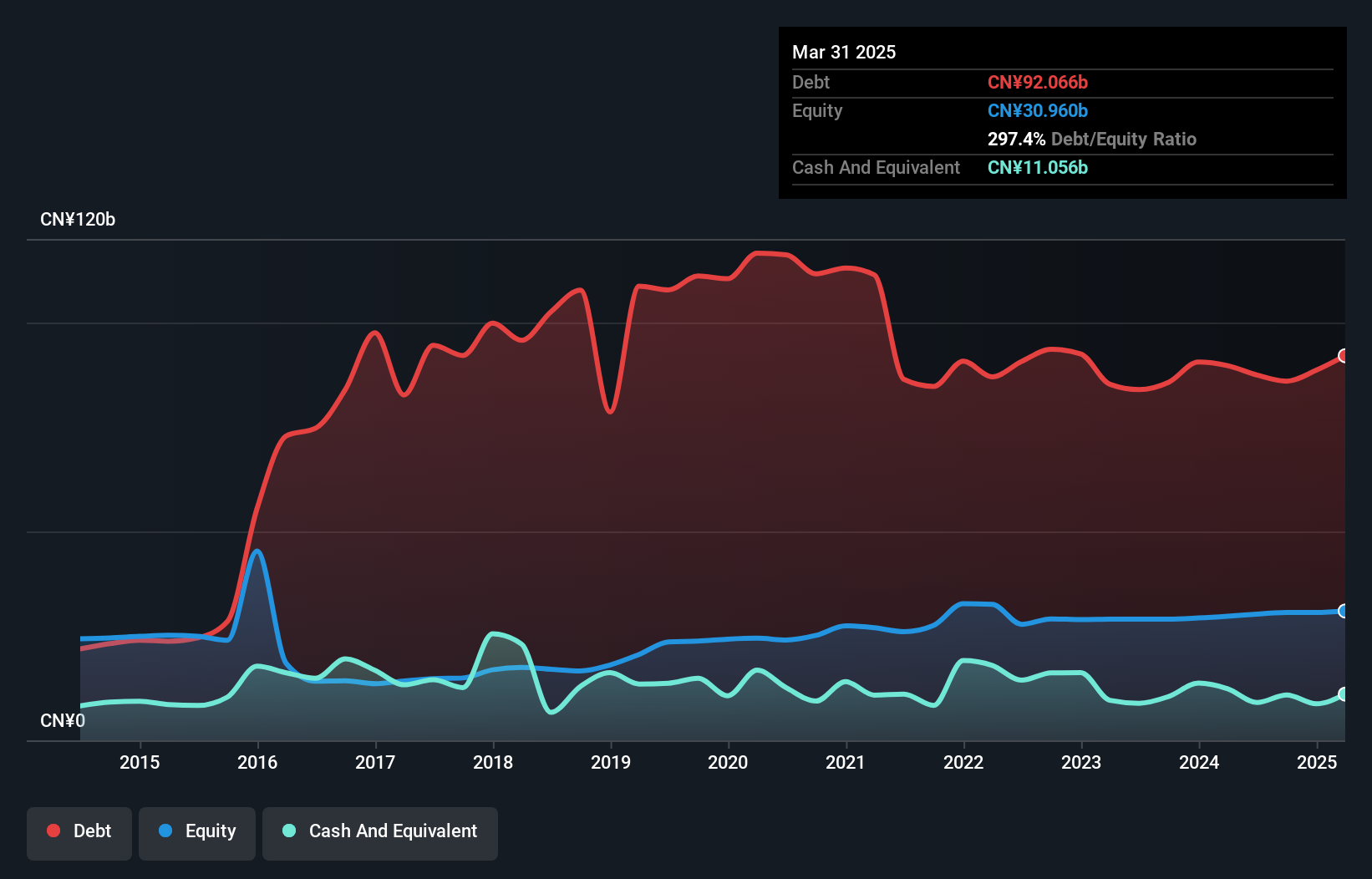The external fund manager backed by Berkshire Hathaway's Charlie Munger, Li Lu, makes no bones about it when he says 'The biggest investment risk is not the volatility of prices, but whether you will suffer a permanent loss of capital.' So it seems the smart money knows that debt - which is usually involved in bankruptcies - is a very important factor, when you assess how risky a company is. We note that COSCO SHIPPING Development Co., Ltd. (HKG:2866) does have debt on its balance sheet. But is this debt a concern to shareholders?
When Is Debt A Problem?
Debt is a tool to help businesses grow, but if a business is incapable of paying off its lenders, then it exists at their mercy. Ultimately, if the company can't fulfill its legal obligations to repay debt, shareholders could walk away with nothing. While that is not too common, we often do see indebted companies permanently diluting shareholders because lenders force them to raise capital at a distressed price. By replacing dilution, though, debt can be an extremely good tool for businesses that need capital to invest in growth at high rates of return. When we examine debt levels, we first consider both cash and debt levels, together.
What Is COSCO SHIPPING Development's Net Debt?
The chart below, which you can click on for greater detail, shows that COSCO SHIPPING Development had CN¥92.1b in debt in March 2025; about the same as the year before. However, because it has a cash reserve of CN¥11.1b, its net debt is less, at about CN¥81.0b.

How Healthy Is COSCO SHIPPING Development's Balance Sheet?
Zooming in on the latest balance sheet data, we can see that COSCO SHIPPING Development had liabilities of CN¥50.5b due within 12 months and liabilities of CN¥48.4b due beyond that. Offsetting this, it had CN¥11.1b in cash and CN¥5.93b in receivables that were due within 12 months. So it has liabilities totalling CN¥82.0b more than its cash and near-term receivables, combined.
The deficiency here weighs heavily on the CN¥27.6b company itself, as if a child were struggling under the weight of an enormous back-pack full of books, his sports gear, and a trumpet. So we'd watch its balance sheet closely, without a doubt. After all, COSCO SHIPPING Development would likely require a major re-capitalisation if it had to pay its creditors today.
See our latest analysis for COSCO SHIPPING Development
In order to size up a company's debt relative to its earnings, we calculate its net debt divided by its earnings before interest, tax, depreciation, and amortization (EBITDA) and its earnings before interest and tax (EBIT) divided by its interest expense (its interest cover). The advantage of this approach is that we take into account both the absolute quantum of debt (with net debt to EBITDA) and the actual interest expenses associated with that debt (with its interest cover ratio).
Weak interest cover of 1.7 times and a disturbingly high net debt to EBITDA ratio of 12.5 hit our confidence in COSCO SHIPPING Development like a one-two punch to the gut. This means we'd consider it to have a heavy debt load. On a slightly more positive note, COSCO SHIPPING Development grew its EBIT at 13% over the last year, further increasing its ability to manage debt. When analysing debt levels, the balance sheet is the obvious place to start. But it is COSCO SHIPPING Development's earnings that will influence how the balance sheet holds up in the future. So if you're keen to discover more about its earnings, it might be worth checking out this graph of its long term earnings trend.
Finally, a business needs free cash flow to pay off debt; accounting profits just don't cut it. So we clearly need to look at whether that EBIT is leading to corresponding free cash flow. Over the last three years, COSCO SHIPPING Development saw substantial negative free cash flow, in total. While that may be a result of expenditure for growth, it does make the debt far more risky.

Our View
On the face of it, COSCO SHIPPING Development's conversion of EBIT to free cash flow left us tentative about the stock, and its level of total liabilities was no more enticing than the one empty restaurant on the busiest night of the year. But on the bright side, its EBIT growth rate is a good sign, and makes us more optimistic. Taking into account all the aforementioned factors, it looks like COSCO SHIPPING Development has too much debt. While some investors love that sort of risky play, it's certainly not our cup of tea. When analysing debt levels, the balance sheet is the obvious place to start. But ultimately, every company can contain risks that exist outside of the balance sheet. To that end, you should learn about the 3 warning signs we've spotted with COSCO SHIPPING Development (including 2 which don't sit too well with us) .
At the end of the day, it's often better to focus on companies that are free from net debt. You can access our special list of such companies (all with a track record of profit growth). It's free.
New: AI Stock Screener & Alerts
Our new AI Stock Screener scans the market every day to uncover opportunities.
• Dividend Powerhouses (3%+ Yield)
• Undervalued Small Caps with Insider Buying
• High growth Tech and AI Companies
Or build your own from over 50 metrics.
Have feedback on this article? Concerned about the content? Get in touch with us directly. Alternatively, email editorial-team (at) simplywallst.com.
This article by Simply Wall St is general in nature. We provide commentary based on historical data and analyst forecasts only using an unbiased methodology and our articles are not intended to be financial advice. It does not constitute a recommendation to buy or sell any stock, and does not take account of your objectives, or your financial situation. We aim to bring you long-term focused analysis driven by fundamental data. Note that our analysis may not factor in the latest price-sensitive company announcements or qualitative material. Simply Wall St has no position in any stocks mentioned.
About SEHK:2866
COSCO SHIPPING Development
Researches, develops, manufactures, and sells containers in the United States, Asia, Hong Kong, Mainland China, Europe, and internationally.
Low risk and slightly overvalued.
Similar Companies
Market Insights
Community Narratives



